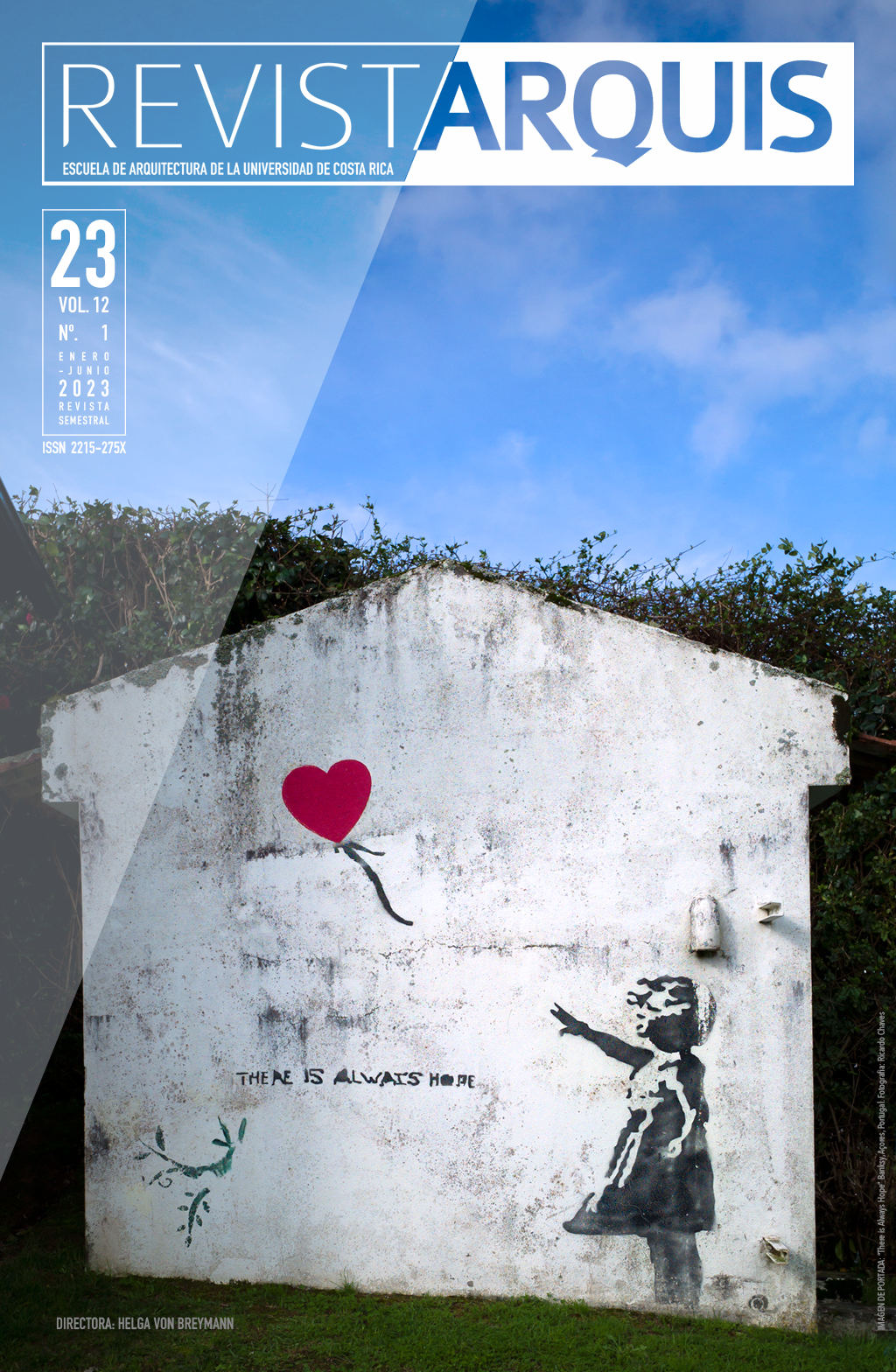Abstract
The article addresses the issue of dissident art in public spaces, which denounces the hegemonic ideology and is countercultural. Understanding by ideology, the forms that sustain the production system, and that, at present, is the capitalist system. We also understand by “dissident” the forms of thought and participation, in this case artistic plastic or visual arts interventions, which, being countercultural, are left without space through the legitimized mechanisms of exhibition in the city, but which, nevertheless, as a resistance strategy, they find their place in the city within the framework of illegality. A semiotic analysis of the urban artwork of the British artist Banksy is made, trying to read in some of his works, his dissident proposal, as well as the background of the forms of intervention of public and private space, which occur without agreement or consent informed between the artist of the works (an anonymous individual, who uses a pseudonym, with which he signs the work) and the owners or managers of the buildings; and how this intervention strategy is part of that dissident resistance proposal. This analysis allows us to understand how public space becomes the support for the work of some individual artists, who find immense potential in the use of the city to communicate their politically countercultural ideas or ideological positions. Thus, the phenomenon of "artistic vandalization" of public space is analyzed as a "positioning" to shape an art of social denunciation.
References
Andrade, G. (2020). Temas convenciones y estilos en el diseño de la nueva familia de billetes costarricenses 2009-2019 como expresión de la ideología y la colonialidad. Escena. Revista de las Artes, 79(2), 99-125. https://doi.org/10.15517/es.v79i2.40161
Armajani, S. (2000). Siah Arjamani. Catálogo. Museo de Arte Reina Sofía.
Banksy. (2004a). Cut it out. Weapons of Mass Distraction. https://new.vk.com/doc-41944_11240036?dl=167870f11ae9a6b226
Banksy. (2004b). Liverpool Rat [Grafiti]. https://www.arthouseready2hang.com/products/banksy-canvas-liverpool-white-rat-banksy-graffiti-wall-art-print-gallery-wrapped
Banksy. (2004c). Napalm (Can’t beat that feeling) [Impresión serigráfica]. https://unmondointorno.it/bansky-nel-mondo/
Banksy. (2004d). Pest Control’ Banksus Militus Vandalus [Grafiti]. https://www.dazeddigital.com/art-photography/article/41743/1/banksy-girl-with-balloon-painting-pranks-sotherbys-london
Banksy. (2005). If we wash our hands of the conflict between the powerful and the powerless we side with the powerful – we dont remain neutral. [Grafiti]. https://www.huffpost.com/archive/ca/entry/dismaland-is-not-interesting-and-neither-is-banksy_b_8049062
Banksy. (sfa). Bathing Rat [Grafiti]. Londres. https://www.artofthestate.co.uk/london-street-art-2/banksy-street-art/banksy-rats/
Banksy. (sfb). Because I’m worthless [Grafiti]. Londres. https://elizatorrisiblog.wordpress.com/because-im-worthless-a-complex-image/
Banksy. (sfc). Don’t forget to eat your lunch and make some trouble [Grafiti]. Ubicación desconocida. https://plasticoceans.org/in-discussion-with-novo-amor/banksy-anarchist-and-mother/
Banksy. (sfd). Keep your coins, I want change [Grafiti]. Londres. https://www.recreoviral.com/fotografia/bansky-mejores-obras-urbanas/
Banksy. (sfe). Napalm (Can’t beat that feeling) [Grafiti]. Ubicación desconocida. https://www.recreoviral.com/fotografia/bansky-mejores-obras-urbanas/
Banksy. (sff). No ball games [Grafiti]. Londres. https://www.flickr.com/photos/shell-shock/6581234413
Banksy. (sfg). Poison Rat or Toxic Rat [Grafiti]. Londres. https://www.fanpop.com/clubs/banksy/images/338566/title/poison-rat-photo
Banksy’s East London Studio Photographed And Exposed. (2012). Artlyst. https://artlyst.com/news/banksys-east-london-studio-photographed-and-exposed/
banksyfilm. (2010). Exit Through the Gift Shop [Archivo de video]. YouTube. https://www.youtube.com/watch?v=a0b90YppquE
Brenner, N., Marcuse, P. y Mayer, M. (eds) (2011). Cities for People, and Not for Profit: Critical Urban Theory and the Right to the City. Routledge.
Didi-Huberman, G. (2013). Cuando las imágenes toman posición. A. Machado Libros.
Fernández, E. (2017). Origen, evolución y auge del arte urbano. El fenómeno Banksy y otros artistas urbanos. [Tesis doctoral, Universidad Complutense de Madrid]. E-Prints Complutense. https://eprints.ucm.es/id/eprint/46424/1/T3958 5.pdf
Florensa, L. (2022). Información sobre los parques de Anaheim. Viajar Los Ángeles. https://www.viajarlosangeles.com/anaheim.php
Harvey, D. (2013). Ciudades Rebeldes, Del derecho de la ciudad a la revolución urbana. Ediciones Akal.
Lefebvre, H. (1974). La producción del espacio. Ediciones Capitán Swing.
Luján, B. (2008). Una aproximación al concepto de arte público. Boletín GC: Gestión Cultural, (16), 1-10. http://blogs.fad.unam.mx/asignatura/ingrid_sosa/wp-content/uploads/2017/08/Lujan-Baudino-Una-aproximacion-al-concepto-de-arte-publico-boletin-Gestion-cultural.pdf
Montalvo, B. (3 y 4 de noviembre de 2010). Notas para una revisión actualizada del concepto de arte social. En 1er. Congreso Internacional Mujer, Arte y Tecnología en la Nueva Esfera Pública. Universidad Politécnica de Valencia. https://blancamontalvo.wordpress.com/2011/01/20/notas-para-una-revision-actualizada-del-concepto-de-arte-social/
Ronald Macdonald. (2 de diciembre de 2022). En Wikipedia. https://en.wikipedia.org/w/index.php?title=Ronald_McDonald&oldid=1125085749
Sungrayes, A. y Mathivet, C. (eds.). (2010) Cities for All: Proposals and Experiences Towards the Right to the City. Habitat International Coalition.
Ut, N. (1972). Niña de Napalm [Fotografía]. Vietnam. https://www.infobae.com/cultura/2022/06/08/50-anos-de-la-mitica-foto-de-la-nina-de-napalm/
Vives, M. (2015). Arte público y espacio público. ¿Arte y res publica o arte en res publica?. Universidad de Barcelona.
Zapata, O., Fidalgo, I. y Bonilla, P. (2015). San José (Di) sentido. I Encuentro de Arte Público: disidencia en el espacio público. Arte y Ciudad, Revista de Investigación, (8), 141-162. https://arteyciudad.com/revista/index.php/num1/article/view/217/317
Comments

This work is licensed under a Creative Commons Attribution-NonCommercial-NoDerivatives 4.0 International License.
Copyright (c) 2022 Grettel María Andrade Cambronero

